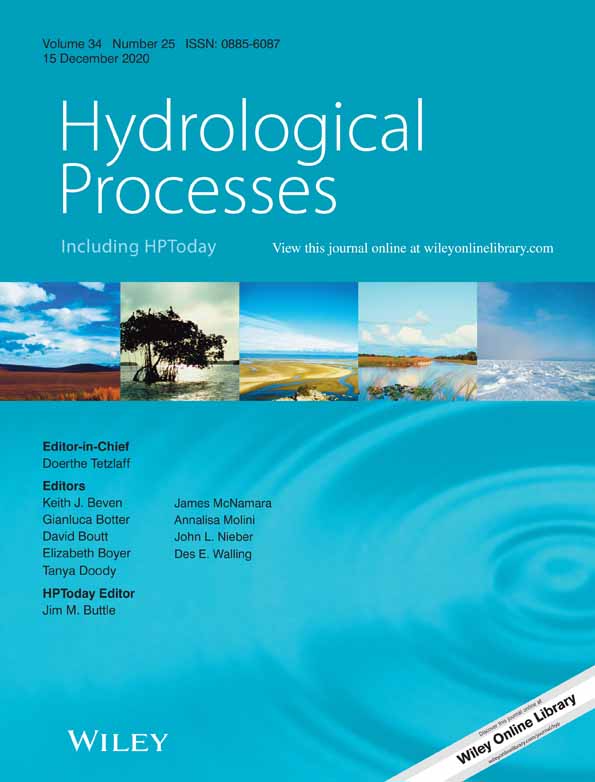Identifying non-stationary and long-term river–aquifer interactions as a response to large climatic patterns and anthropogenic pressures using wavelet analysis (Mancha Oriental Aquifer, Spain)
Funding information: Junta de Comunidades de Castilla-La Mancha, Grant/Award Number: SBPLY/17/180501/000296; Ministerio de Ciencia e Innovación, Grant/Award Number: CGL2017-87216-C4-2-R
Abstract
The objective of this study was to analyse periodicities and the long-term variability of monthly Júcar River–Mancha Oriental Aquifer interactions (RAI) and regionally measured precipitation (PP) with special focus on the correlations between these local hydrological variables and the large climatic patterns governing the Iberian Peninsula, represented by their teleconnection indices – the North Atlantic Oscillation index (NAOi) and the Western Mediterranean Oscillation index (WeMOi). To that end, wavelet analysis has been applied since it not only provides insight into the time-series dynamics but also permits statistical interpretation and correlation analysis. As a result, several periodicities have been detected: intermittent semi-annual periodicity in PP and the NAOi and annual periodicity in the RAI, NAOi and WeMOi time series. Long cycles (approximately 14 years) are also observed in the PP and WeMOi time series. The cross-wavelet spectra show a correlation between the RAI and the rest of the variables on the semi-annual and the annual scales, while wavelet coherence detects common behaviour with longer cycles – 5–6 years between the NAOi and the RAI and cycles of both 1–5 years and 7–10 years between PP and the RAI. Furthermore, results show that the periodicities in the teleconnection indices and precipitation propagate into the RAI with certain lead times: 3 months between the RAI and PP and 6 months between the RAI and the NAOi. The results indicate that the detected periodicities and the coherence between the studied variables could have applications in strategic planning on a river basin scale, taking into account the propagation times and the frequency scale. This methodological approach can be applied into strategic water resource planning independently of the geographical location of the hydrogeological system, the basin size and the climate region.
Open Research
DATA AVAILABILITY STATEMENT
The datasets that support the findings of this study are from different sources and their availability varies. Climate indices data are downloadable from the public domain and for the North Atlantic Oscillation index the data were derived from the following resource: [https://crudata.uea.ac.uk/cru/data/nao/nao.dat], while for the Western Mediterranean Oscillation index the data were obtained from: [http://www.ub.edu/gc/documents/Web_WeMOi.txt]. Restrictions may apply to the availability of the precipitation data and for the purpose of this study the data were received after written request from the State Meteorological Agency of Spain. The time series data of river-aquifer interactions were obtained with numerical groundwater flow model, using Modflow code. The information is available from the corresponding author upon reasonable request.




